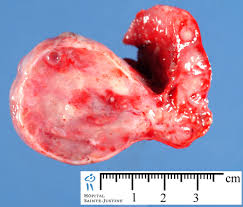OVARITIS , ITS ETIOLOGY AND PATHOLOGY
Ovaritis rarely exists as a distinct affection, and probably is most always associated with and secondary to salpingitis. For this reason
most authorities have preferred to consider them under the general head of salpingo-oophoritis. Pozzi doubts the occurrence of primary ovaritis,
but Prochownick and Dalche have recently upheld the view that it may occur independently of infection or any preceding lesion of the uterus
and tubes. That ovaritis may and often does exist independently of salpingitis the writer firmly believes, or the latter condition, if present,
may be so obscured as to give rise to no evidence of its existence.
 |
| ACUTE OVARITIS |
NOW , WHAT IS CHRONIC OVARITIS?
Chronic ovaritis may exist as a condition of atrophy, hyperplasia, or cystic degeneration ; but the term is most frequently applied to a con-
dition of passive hyperaemia, which may eventually result in a state of hyperplasia.
A frequent cause of chronic ovaritis is undoubtedly interference with the circulation and nutrition produced by displacement of the
uterus, and also from adhesions surrounding the organ resulting from tubal disease.
In the atrophic form the ovary is small, hard, and nodular, and the tunica albuginea is thickened.
Ovaritis is to be distinguished from salpingitis with tubal distension by the enlargement being more globular in shape and l3nng farther from
the uterus, and there is no fluctuation unless there is an abscess.
From exudation in the broad ligament ovaritis may be differentiated by the enlargement being more circumscribed, less closely related to the
vaginal vault, and there is less fixation of the uterus.

No comments:
Post a Comment
Welcome to Bulky Uterus ... Post your Comments Here ....